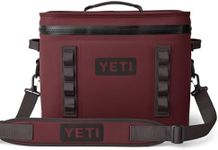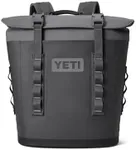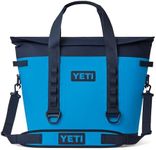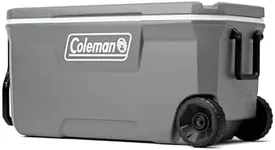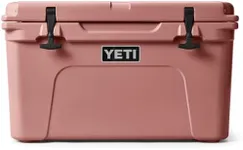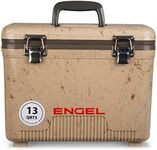Buying Guide for the Best Coolers
When choosing a cooler, you want to make sure you're buying one that will keep your food and drinks cold for as long as you need, whether it's for a picnic, camping trip, or backyard BBQ. It's important to look at how much space you need, how easy the cooler is to transport, and how long it will keep your things cold. Think about what activities you use the cooler for most, and that will help point you to the best fit.CapacityCapacity refers to how much the cooler can hold, usually measured in quarts or liters. This is important because it determines if you'll have enough space for your food and drinks. Small coolers under 20 quarts are best for solo use or short trips, medium ones between 20-50 quarts suit families or a small group for a day out, and large coolers over 50 quarts are ideal for bigger groups or longer stays. Choose your cooler size based on the number of people and length of time you'll spend without access to other refrigeration.
Ice Retention TimeIce retention time is how long the cooler can keep ice or cold packs frozen before they melt. This matters if you want to keep food safe or drinks cold over multiple days, especially for camping or travel. Short-retention coolers (less than 24 hours) are fine for day trips, mid-range (2-3 days) suit weekend getaways, and high-performance coolers (4 days or more) are best for longer adventures. Pick your ice retention based on how long you'll be away from home or a freezer.
PortabilityPortability includes features that make it easy to move the cooler, like handles, wheels, and weight. If you'll be carrying your cooler solo for short distances, a lightweight model with a shoulder strap works. For heavier, larger coolers, wheels and sturdy handles are essential, especially if you'll move it over rough terrain. If you mainly stay in one place, portability isn't as big a concern.
DurabilityDurability reflects how well the cooler stands up to wear and tear, weather, drops, and being loaded or sat on. Basic models work for light use or gentle environments, while premium rugged coolers with thick walls and strong latches withstand tough conditions, abuse, and long-term outdoor use. Consider how rough you'll be with your cooler and pick a level of durability that matches.
Insulation TypeInsulation type is what keeps the cold in, and can range from basic foam (adequate for day trips), to thick injected foam or pressure-injected walls (better for long ice retention). Higher-end coolers often have superior insulation, but can be heavier. If keeping things cold for extra-long is important for your usage, opt for better insulation; for quick set-and-go, basic insulation is enough.
Ease of CleaningEase of cleaning means how simple it is to wipe down and remove spills, stains, or odors from the cooler. Some coolers have smooth interiors and drain plugs for easy cleaning, while others may have corners or textures that trap messes. If you expect lots of use or messy situations, prioritize a cooler that's quick and convenient to clean.

